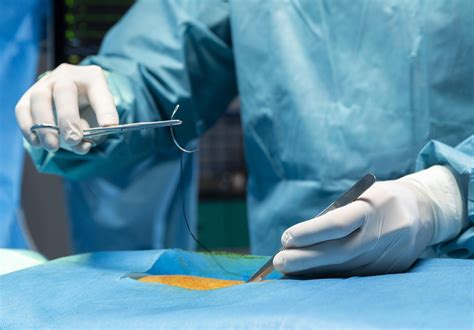Intro
Discover 5 effective ways to treat Bartholin gland cysts, including home remedies, antibiotics, and surgery, to alleviate painful symptoms and promote healing of Bartholin gland infections and abscesses.
The Bartholin's gland, located on each side of the vaginal opening, plays a crucial role in vaginal health by secreting fluids that help maintain moisture and lubrication. However, when the gland or its duct becomes obstructed, it can lead to the formation of a cyst, which may cause discomfort, pain, and difficulty walking or engaging in sexual activity. Understanding the Bartholin's gland cyst and its treatment options is essential for women's health and well-being.
The Bartholin's gland cyst is a common condition that can affect women of reproductive age. It occurs when the gland or its duct becomes blocked, causing the secretion to accumulate and form a cyst. The cyst can become infected, leading to an abscess, which is a more severe and painful condition. If left untreated, the cyst can cause significant discomfort and may lead to complications such as infection, abscess, or even cancer, although the latter is rare.
The symptoms of a Bartholin's gland cyst can vary depending on the size and location of the cyst. Some women may experience a small, painless lump on the labia, while others may have a larger, more painful cyst that causes discomfort during walking, sitting, or sexual activity. In some cases, the cyst may become infected, leading to increased redness, swelling, and pain. If you suspect that you have a Bartholin's gland cyst, it is essential to consult a healthcare provider for proper diagnosis and treatment.
Treatment Options for Bartholin's Gland Cyst

There are several treatment options available for Bartholin's gland cyst, ranging from conservative management to surgical intervention. The choice of treatment depends on the size and location of the cyst, as well as the presence of any symptoms or complications. Here are five ways to treat a Bartholin's gland cyst:
1. Sitz Bath
A sitz bath is a warm water bath that can help soothe the area and promote drainage of the cyst. To take a sitz bath, fill a bathtub with warm water and add a tablespoon of salt or baking soda. Sit in the bathtub for 10-15 minutes, 2-3 times a day, to help reduce discomfort and promote healing.Medical Management

In some cases, medical management may be necessary to treat a Bartholin's gland cyst. This can include antibiotics to treat any underlying infection, as well as pain relief medications to manage discomfort.
2. Antibiotics
If the cyst becomes infected, antibiotics may be prescribed to treat the infection. It is essential to complete the full course of antibiotics as prescribed by your healthcare provider to ensure that the infection is fully cleared.Surgical Options

In some cases, surgical intervention may be necessary to treat a Bartholin's gland cyst. There are several surgical options available, including:
3. Marsupialization
Marsupialization is a surgical procedure that involves making a small incision in the cyst and stitching the edges of the incision to the surrounding tissue. This creates a new duct for the gland, allowing it to drain properly.4. Excision
Excision is a surgical procedure that involves removing the entire cyst and gland. This is usually reserved for larger cysts or those that have become infected.5. Jacobi Ring Procedure
The Jacobi ring procedure is a surgical procedure that involves placing a small ring in the cyst to create a new duct. This allows the gland to drain properly and can help prevent future cysts from forming.Home Remedies

In addition to medical and surgical treatment options, there are several home remedies that can help manage the symptoms of a Bartholin's gland cyst. These include:
- Applying a warm compress to the area to help reduce discomfort and promote drainage
- Taking over-the-counter pain relief medications, such as ibuprofen or acetaminophen, to manage pain and discomfort
- Practicing good hygiene and keeping the area clean to reduce the risk of infection
- Avoiding tight clothing and stress, which can exacerbate symptoms
Prevention

While it is not possible to completely prevent a Bartholin's gland cyst from forming, there are several steps that can be taken to reduce the risk. These include:
- Practicing good hygiene and keeping the area clean
- Avoiding tight clothing and stress, which can exacerbate symptoms
- Getting regular check-ups with a healthcare provider to monitor for any changes or abnormalities
What are the symptoms of a Bartholin's gland cyst?
+The symptoms of a Bartholin's gland cyst can vary depending on the size and location of the cyst. Some women may experience a small, painless lump on the labia, while others may have a larger, more painful cyst that causes discomfort during walking, sitting, or sexual activity.
How is a Bartholin's gland cyst diagnosed?
+A Bartholin's gland cyst is typically diagnosed through a physical examination and medical history. In some cases, additional tests, such as a biopsy or ultrasound, may be necessary to confirm the diagnosis.
What are the treatment options for a Bartholin's gland cyst?
+There are several treatment options available for a Bartholin's gland cyst, including sitz baths, antibiotics, and surgical intervention. The choice of treatment depends on the size and location of the cyst, as well as the presence of any symptoms or complications.
Can a Bartholin's gland cyst be prevented?
+While it is not possible to completely prevent a Bartholin's gland cyst from forming, there are several steps that can be taken to reduce the risk. These include practicing good hygiene, avoiding tight clothing and stress, and getting regular check-ups with a healthcare provider.
What are the complications of a Bartholin's gland cyst?
+If left untreated, a Bartholin's gland cyst can lead to complications such as infection, abscess, or even cancer, although the latter is rare. It is essential to seek medical attention if you suspect that you have a Bartholin's gland cyst.
If you suspect that you have a Bartholin's gland cyst, it is essential to consult a healthcare provider for proper diagnosis and treatment. With the right treatment and care, it is possible to manage the symptoms and prevent complications. We invite you to share your thoughts and experiences with Bartholin's gland cyst in the comments section below. Additionally, if you found this article informative and helpful, please consider sharing it with others who may be affected by this condition.
